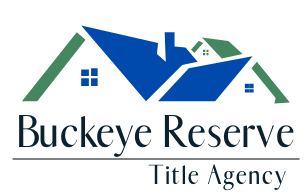1031 Exchanges: What They Are And How You Can Benefit From Them?
A 1031 exchange is a real estate investment tool that allows investors to defer capital gains taxes on the sale of investment property by reinvesting the proceeds from the sale into another “like-kind” property.
The 1031 exchange has been a part of the U.S. tax code for over 100 years and is an important tool for investors who are looking to grow their portfolio without being immediately taxed on their gains.
Who qualifies for a 1031 Exchange?
Owners of investment and business property may qualify for a Section 1031 deferral. Individuals, C corporations, S corporations, partnerships (general or limited), limited liability companies, trusts and any other taxpaying entity may set up an exchange of business or investment properties for business or investment properties under Section 1031.
What property qualifies for a Like-Kind Exchange?
Both the relinquished property you sell and the replacement property you buy must meet certain requirements. Both properties must be held for use in a trade or business or for investment. Property used primarily for personal use, like a primary residence or a second home or vacation home, does not qualify for like-kind exchange treatment. Both properties must be similar enough to qualify as "like-kind." Like-kind property is property of the same nature, character or class.
What are the time limits to complete a 1031 Exchange?
While a like-kind exchange does not have to be a simultaneous swap of properties, you must meet two time limits or the entire gain will be taxable. The first limit is that you have 45 days from the date you sell the relinquished property to identify potential replacement properties. The identification must be in writing, signed by you and delivered to a person involved in the exchange like the seller of the replacement property or the qualified intermediary. However, notice to your attorney, real estate agent, accountant or similar persons acting as your agent is not sufficient. Replacement properties must be clearly described in the written identification. This means a legal description, street address or distinguishable name. The second limit is that the replacement property must be received and the exchange completed no later than 180 days after the sale of the exchanged property or the due date (with extensions) of the income tax return for the tax year in which the relinquished property was sold, whichever is earlier. The replacement property received must be substantially the same as property identified within the 45-day limit described above.
How do you report 1031 Exchanges to the IRS?
You must report an exchange to the IRS on Form 8824, Like-Kind Exchanges and file it with your tax return for the year in which the exchange occurred.
Form 8824 asks for:
• Descriptions of the properties exchanged
• Dates that properties were identified and transferred
• Any relationship between the parties to the exchange
• Value of the like-kind and other property received
• Gain or loss on sale of other (non-like-kind) property given up
• Cash received or paid; liabilities relieved or assumed
• Adjusted basis of like-kind property given up
Who qualifies as an intermediary for completing a 1031 Exchange?
A Qualified Intermediary is an entity, typically an attorney or qualified tax advisor, that creates documentation supporting the investors intent to initiate a 1031 tax deferred exchange and holds the exchange proceeds in a manner that preserves principle and liquidity. The Qualified Intermediary’s role is to provide input, helping the taxpayer understand how a 1031 exchange works and interfaces with the title company, so the closing statements reflect a 1031 exchange.
If you are considering a 1031 exchange, it is important to consult with a qualified tax advisor or attorney to ensure that you are following all of the rules and regulations.
Both our company and trusted attorney, Ronald Martin, have extensive experience with 1031 tax deferred exchanges. For more information, give us a call at 330.686.2282 or e-mail kaley@buckeyereserve.com
Sources: https://www.irs.gov/pub/irs-news/fs-08-18.pdf

